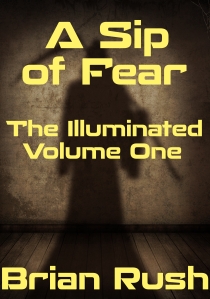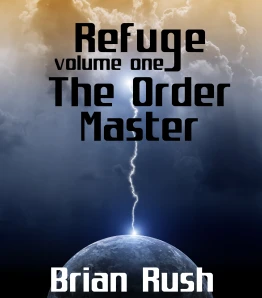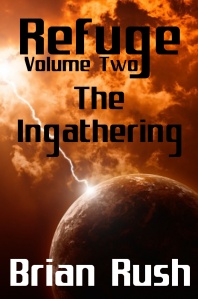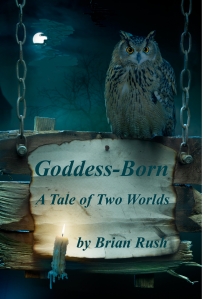 There’s a particular literary sin — or it’s a sin to my own nitpicking mind — that bothers me in the science fiction and fantasy genres. I’m referring to presenting a political or economic reality that, given the technology in common use, cannot possibly exist. This is the reason I can’t watch the TV show “Firefly,” which presented a world culturally and politically and economically indistinguishable from ours in space with technology that would insist on something new. It’s a flaw in Asimov’s Foundation series: the very existence of a monarchical Galactic Empire is absurd. It’s what made me grit my teeth in frustration on reading the Wild Card shared world series, which depicted a high-tech feudal monarchy and a high-tech robber-baron capitalist society, neither of which can exist.
There’s a particular literary sin — or it’s a sin to my own nitpicking mind — that bothers me in the science fiction and fantasy genres. I’m referring to presenting a political or economic reality that, given the technology in common use, cannot possibly exist. This is the reason I can’t watch the TV show “Firefly,” which presented a world culturally and politically and economically indistinguishable from ours in space with technology that would insist on something new. It’s a flaw in Asimov’s Foundation series: the very existence of a monarchical Galactic Empire is absurd. It’s what made me grit my teeth in frustration on reading the Wild Card shared world series, which depicted a high-tech feudal monarchy and a high-tech robber-baron capitalist society, neither of which can exist.
To make the world you’re building or reading real, it’s important to take the prevailing technology (and also the prevailing magic) into consideration when determining the culture’s politics and economics. You can’t slap an ideal democracy onto your Bronze-Age empire just because you like it better than a monarch and his satraps. The latter can actually govern a Bronze Age empire, while the former cannot (unless of course you have some magic that replaces the technological underpinnings necessary for widespread democracy).
Government is the making and implementing of collective decisions and the resolving of disputes in a community. How that is done — how it can be done — and what disputes can arise are functions of material circumstances, and more than anything else, material circumstances are functions of technology. Of all areas of technology, the most important for purposes of governance are those related to communication.
Collective decisions are made by (at least tacit) agreement. It requires communication. As long as people are in the same place, communication travels at the speed of sound — they stand or sit there and talk to each other. Get past the range of talking and listening, and communication happens as fast as a message can travel, and as well as it can be repeated and understood. This limits the ability of people to participate in the making of collective decisions when they are distant from the conversation.
Democracy is very old in origin. It’s the most natural form of government, but in a low-tech society it only works in a small community, where people can gather in the same place, hash things out, and vote. Athens had a democracy. Alexander’s empire, though steeped in Athenian values and culture, did not. Why not? Aside from Alexander’s ego, it would have been impossible for all of the residents of the eastern Mediterranean region from Persia to Egypt to Macedonia to get together in a town meeting, hash things out, and vote.
For this reason, although there were a few exceptions such as the Athenian democracy and the Roman Republic, the prevailing government form throughout the ancient world was monarchy: a strong head of a privileged class that made collective decisions for everyone, that most people went along with because they weren’t asked for all that much, they got protection from bandits and neighboring enemy kingdoms, and they didn’t want to get their heads cut off by the king’s men.
Today, it’s quite different. Today, the prevailing government form is representative democracy. Why? Because of the advance of technology, with the most important inventions being the printing press and representation itself. The printing press led to widespread literacy, which made people less inclined to go along with collective decisions in which they weren’t allowed to participate. Representation allowed people to participate in a democratic government by proxy, when they were still unable to do so directly.
We have new communication technology now that is once again changing the nature of governance: the internet, which permits instantaneous, widespread participation in the global debate. Because of this development, governance in a hundred years (assuming civilization survives) will have a lot more direct and participatory democracy elements cutting through and dominating the remaining representative mechanisms. We will see economic changes, too, deriving from advances in computers and robotics that make it possible to produce wealth without human labor.
The end result of all this is that it’s anachronistic to have in a story a modern representative democracy governing a low-tech, illiterate society, or a feudal monarchy governing a high-tech industrialized one, or anything fully recognizable from any era in history governing a future society with more advanced technology still. It’s lazy, thoughtless world-building and should provoke snorts of disbelief and head-shaking.
There are constraints on world building that come from the prevailing technology and magic. Magic can change the basic picture derived from technology, but it should always be possible to see how it does so. Anything doesn’t go. It can (and should) be imaginative, but it all has to make sense.
Image credit: berkut2011 / 123RF Stock Photo









